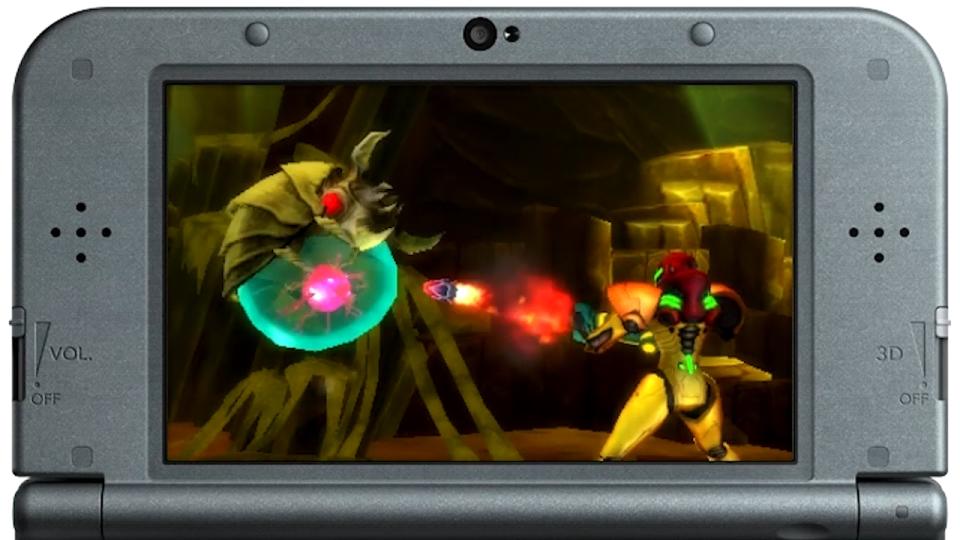'Metroid: Samus Returns' plays like a modern classic
Fans of Nintendo's traditional 'Metroid' games have nothing to fear.
For a brief moment, a number floating in space overshadowed everything else during Nintendo's E3 digital showcase. The announcement of Metroid Prime 4 heralded the return of a franchise that, with the exception of a single spin-off, had been dormant for seven long years. Less than an hour later, Nintendo dropped another announcement: A remake of the Game Boy's Metroid 2 would be coming to 3DS by the end of the year.
Fans were left to wonder if either title could make up for the series' absence over the past decade. Today, we can say that at least one might. Metroid: Samus Returns is everything you could ask from a traditional 2D Metroid game.
In recent years, that's a lot. The franchise's last two games fell flat with many fans. In Metroid Prime: Federation Force, the series' iconic protagonist was relegated to a non-playable supporting role. In Metroid: Other M, her character was weighted down by a disappointing, frustrating narrative. Samus Returns takes the hero and the franchise back to its roots -- from level design that encourages exploration and satisfying enemy encounters to the traditional 2D platforming style that helped birth the term "Metroidvania."
For veterans of the franchise's more traditional games, it feels like coming home. Samus Returns builds on the tight, exploration platforming of Super Metroid, Metroid Fusion and Metroid: Zero Mission, and then adds to it. Samus can still shoot up, down and diagonally, but holding R activates a precision-aiming mode with full range of motion and a targeting laser. There's also a new counter-attack move that can knock back an enemy. Time it just right, and it'll throw an attacker off balance and set them up as a perfect target.
These little revisions are important -- not only are they unique features that help the game stand out from other Metroid titles, but they're features that help drag the title Samus Returns is based on into the modern era. Metroid 2 may have been a classic, but not everything about it aged well. The goal is still the same: Samus needs to plunder the depths of planet SR388 and exterminate the Metroid, but this time players have extra tools to keep the experience from being frustrating.

It was easy to get lost in the original game's grayscale caverns, for instance, but Samus Returns' new map system helps keep players on track. There are also shrines scattered throughout the game that serve to unlock new areas based on how many Metroids you've defeated -- giving players some direction as what part of the planet they need to explore next. If that's not enough, there are also new Aeon abilities that can clue lost players in to where a secret is, or where the next Metroid might be hiding.
Finding those Metroids leads to progressively intense battles. Encounters with the series' titular enemy can be a stressful, but rewarding challenge -- albeit one slightly changed by the new mechanics in Samus Returns. Pulling off a counter attack on a Metroid is a little tricky, but doing so offers the player a chance to unload missiles into the beast's belly in an epic slow-motion attack. It looks and feels awesome. Failure comes with a high risk, however -- miss the counter mark by just a moment, and Samus takes heavy damage.
Our short demo of the game also made excellent use of the console's namesake 3D feature -- both in beautifully painted stereoscopic backdrops used in the game's epilogue and in the general level design. The illusion of depth helps fill in the backgrounds behind the game's main stage, breathing a life into planet SR388 that just wasn't possible on the original Game Boy's monochromatic display.

This all adds up to an experience that feels streamlined without losing the essence of what makes a Metroid game a Metroid game. The core mechanics of the experience feel like it's returning to the franchise's roots while still ironing out the leftover kinks. Remember how frustrating it could be to backtrack all the way across the map to go to a new area? You don't have to do that anymore -- there are fast travel points. Not sure where to go next? Use your Aeion ability and get a hint. At the same time, these features are optional. If you want a more more challenging Metroid experience, it's still here.
I could go on about how, as someone who grew up on Super Metroid, the latest entry represents what I'm looking for from the series -- but at the end of the day, I don't need to. With a title like Samus Returns, the game says it on it's own. Metroid is back. And it's good.













